few
Words
About CCA
OUR WORK
Teams

Our Approach
The Connecticut Children’s Alliance:
- Offers peer support and mentoring
- Conducts advocacy and cross-agency training
- Provides outreach and education
- Develops funding and other resources to support programs
- Proposes methods to standardize the collection of statistical information
- Ensures that prompt and appropriate actions are taken to assure the safety of the child victim
- Reduces the trauma of victimization for the child
- Minimizes the number of required interviews for the child victim
- Facilitates recommended medical and mental health services
- Coordinates efforts in order to eliminate duplication of services
- Increases the likelihood of successful prosecution of offenders
- Provides support for non-offending parents/caregivers in order to enhance their ability to protect and care for their children
- Promotes policies, practices, and procedures which are culturally sensitive
Our Story
Connecticut Children’s Alliance (CCA) is a professional membership organization on a mission to end child abuse. The Connecticut Children’s Alliance, Inc. (CCA) began its journey as a coalition of CACs and MDTs in 1999 developed by then CAC directors to advocate for the model on a statewide level. In 2009, CCA received 501(c) 3 status, gaining NCA chapter recognition in 2010 with two full member CACs, two associate members, and eleven MDTs. At present the chapter includes nine accredited CACs, one Associate, and seventeen MDTs. The CCA has been instrumental in supporting the growth and development of CACs and MDTs statewide. Over the last several years, CCA began receiving input for members and other stakeholders that there was a need to focus more on prevention if we really wanted to work on ending child abuse. In 2018, CCA collaborated with stakeholders to develop the Prevent Child Abuse CT program.
To bring child abuse to an end.
Our Mission and Vision
The CCA’s mission is to avail comprehensive statewide services to all child abuse victims and their families through collaboration, systemic change, public awareness, prevention, and legislative advocacy.
To bring child abuse to an end.
Our History
Connecticut Children’s Alliance (CCA) is a professional membership organization on a mission to end child abuse. The Connecticut Children’s Alliance, Inc. (CCA) began its journey as a coalition of CACs and MDTs in 1999 developed by then CAC directors to advocate for the model on a statewide level.
1999In 2009, CCA received 501(c) 3 status.
2009Gaining NCA chapter recognition in 2010 with two full member CACs, two associate members, and eleven MDTs. At present the chapter includes nine accredited CACs, one Associate, and seventeen MDTs. The CCA has been instrumental in supporting the growth and development of CACs and MDTs statewide. Over the last several years, CCA began receiving input for members and other stakeholders that there was a need to focus more on prevention if we really wanted to work on ending child abuse.
2010In 2018, CCA collaborated with stakeholders to develop the Prevent Child Abuse CT program.
2018
